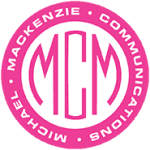Within a week, two friends tell you how great Facebook Marketplace is for finding bargains.
The first friend shares, “Facebook Marketplace is such an easy and affordable place to shop online for gently used household items at affordable prices.”
A week later a second friend remarks, “Dave and I have been wanting to replace our ugly dark kitchen table with something fresh and new, but everything is so expensive. Have you used Facebook Marketplace? Yesterday I found this amazing whitewashed farmhouse table and matching chairs for $150 bucks – picked it up same day. Look at this pic – it transforms my kitchen!”
Which friend moved you to visit Facebook Marketplace? Of course it was the storyteller. Why? She pulled you into her problem on an EMOTIONAL level. You RELATED to her (your kitchen is ugly too, and you are on a tight budget as well) and felt a little ENVIOUS of her find. Seeing the photo of her find completes the happy ending – you are sold and can’t wait to go there to find your own bargain.
Storytelling connects your audience to your brand in an emotional way. Storytelling works not just for B2C brands but for B2B brands, too. Here are three B2B brand storytelling topics to get you started:
1. History of Your Company
What: Got a big company anniversary coming up? That’s a great time to have your CEO narrate a story of how the company got its start and how far it’s come; remember to highlight the people and relationships that have made the company great. People are drawn to stories and images about people.
When and Where: Post under the About section of your website and promote on social; people like to click on these stories from LinkedIn, Facebook and Twitter.
2. Brief Benefit Scenarios
What: Describe a specific story of how a client used a very specific product feature or service that relieved a pain point, saved time or money. Don’t focus on the product name, just how the client used the capability and how it helped them. Don’t have permission from the client to mention their name? Anonymizing the client is permitted but best practiced if you can profile them by industry, geography or size.
“We have a financial client who started ramping up staff quickly last month – multiple recruiters filling several positions – which normally leads to a tidal wave of emails and confusion as to who’s on first, right? But on Teams we set up a channel for each job posting so there are no mix-ups, everyone has instant status updates and can view/edit latest files, even from their phone. They’ve told me they are completing onboarding in half the time.”
When and Where: These stories are good for client presentations and can be prepared as short videos that live on your website. Your approach can be quick and dirty! Take them from your iPhone and try not to sound scripted. Again, post these on social media to pull people to your website.
3. Case Studies
What: Sharing the story of how one of your clients is successfully using your products or services can be one of your most valuable marketing tools. Highlight the challenge they had and the solution you brought to solve the problem. Include raving direct quotes from the client and client photos if you can get them. Once again, you’ll need their permission to use their name but if that is not provided, an agnostic approach is still valuable.
When and Where: After completing a project or implementation with the client, always ask permission to do a case study. These stories take the most time to create, but they are priceless as you can use them countless ways:
- Write up the story and create a one-page, double sided layout you can store on your website.
- Use the story as an abstract to submit for a co-speaking opportunity at an industry conference; co-presenting with a client is almost mandatory at conferences these days.
- Announce the case study in a press release, pitch to industry outlets and local media.
- Send out an email blast telling your clients and prospects the story.
- Post on social media to drive traffic to your website.
Don’t forget that your story, even a brief one, should cover Who, What, When, Where, Why and How. It should also have a great starter hook in the beginning, a middle the reader/listener can relate to, and a happy ending. Ready to tell some stories? Reach out to your favorite content marketing specialists at Michael Mackenzie Communications to get started.
This post is courtesy of MMC Account Manager Jeni Stephens

